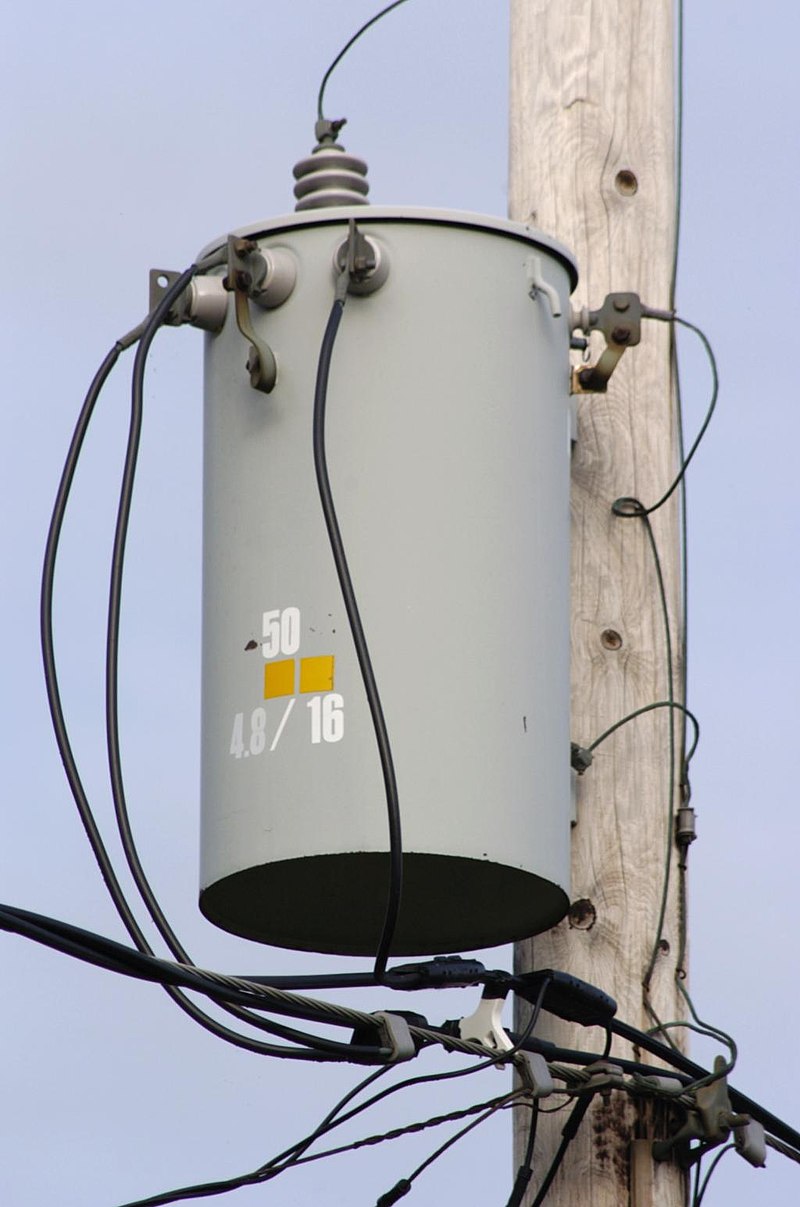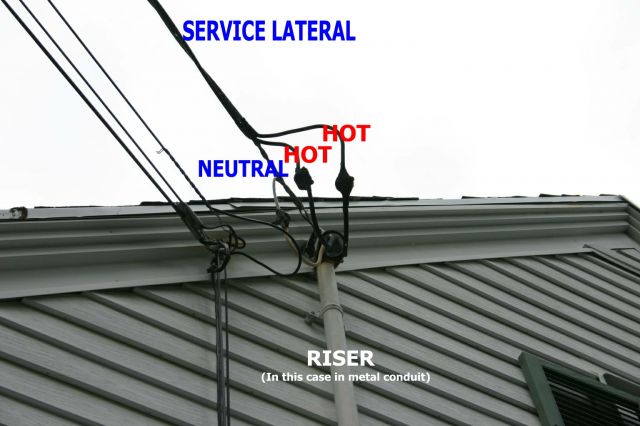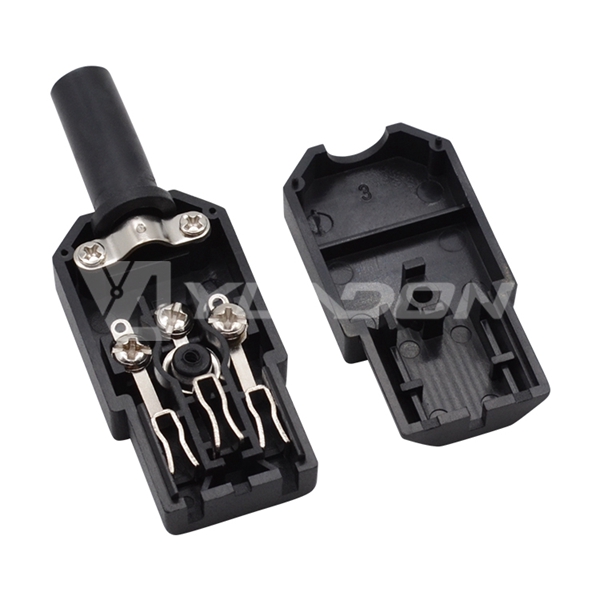^Ang tawag ko diyan DIY hacks na mga Pilipino. Eto yung tipong ginagawa kasi gumagana paminsan pero hindi electrically sound. To begin with si kuya engineer pinaguusapan ang "line to line" tapos assume kaagad na walang neutral eh ang dami naman ng bahay sa Pinas na may neutral sa line to line setups. Eh kung may neutral to begin with di hindi na kailangan gumawa ng DIY hackjob na pinakita niya.
Siguro para hopefully maging clearer we need to go more technical. Pag split-phase (commonly called "line to line" sa Pinas) generally may neutral yan (with some exceptions dahil sa weirdness ng residential wiring sa Pinas). Yung full voltage ng split-phase system makukuha mo by using the two "hot" phase conductors. Sa atin ang isang phase conductor ay 110 volts, sa U.S. 120 volts. Sa split phase system yung two phases ay 180 degrees apart from each other:

This diagram ay para sa U.S. (120/240 volts) pero the principles remain the same. Note na to get 240 volts (220 V sa Pinas) you need to use BOTH phase conductors ("hot" conductors) because ang voltage ay yung difference or distance between the phases.
First part ng diagram:
phase 1 = +120 volts, phase 2 = -120 volts
Voltage = phase 1 minus phase 2
120 volts minus -120 volts = 120 V + 120 V =
+240 V
Second part ng diagram:
phase 1 = -120 volts, phase 2 = +120 volts
Voltage = phase 1 minus phase 2
-120 volts minus 120 volts =
-240 V
Dapat obvious sa diagram ang origin ng word na alternating current (AC). Makikita natin na nagswi-swing ang voltage from -240/220 volts to +240/220 volts at 50 or 60 times a second. Yung 50 or 60/sec ay tinatawag na
utility frequency, measured in Hertz (Hz). Sa Pinas and U.S. ang utility frequency ay 60 Hz, pero maraming countries na 50 Hz. That's why commonly makikita mo ang appliance ratings ay voltage and utility frequency, e.g. "220-240 volts, 60 Hz".
Now eto ang critical part, so pay attention closely. To get 120/110 volts sa diagram, dapat obvious na kailangan mo lang ng ONE phase conductor. Pero unlike sa 240/220 V, ang voltage ay hindi relative sa two phases, instead relative siya sa line sa gitna na labelled 0 (zero). Yung zero reference na yan ang tinatawag na NEUTRAL. That's why to get 110 volts sa Pinas you get one hot phase conductor at one neutral. Pag 220 volts, two hot phase conductors. Yung NEUTRAL na yan is connected sa step-down distribution transformer, na typically makikita mo sa utility poles. To be precise yung neutral is center-tapped sa transformer, kung pinanood mo yung naka-link na video earlier may konting discussion about it doon.

Look at yung distribution transformer outputs. Left to right ay: phase conductor 1, neutral, phase conductor 2. Look carefully sa neutral (yung nasa gitna), siya yung bonded to yung transformer casing with a strap. Then trace yung wire niya carefully kung saan siya pupunta. Naka-clamp siya dun sa aluminum wire, kung saan nakapalupot yung two hot phase conductors. Yung neutral/aluminum wire na to is GROUNDED via another cable (nasa lower right corner ng picture). Kung susundan mo yan, yung cable na to is connected to a GROUNDING ROD sa base ng utility pole.
Crude illustration to drive home the point:

So from the distribution transformer tatakbo ang neutral aluminum wire at "hot" phase conductors sa mga poste, then pag papasok ng bahay nagiging service drop:

Note that an NEUTRAL aluminum conductor ay bonded sa COPPER wire, tapos ang copper wire papasok sa weather head, then sa pipe paloob ng bahay. So from there on, siya na ang neutral na papunta ng service panel at ilalatag papuntang outlets. Note that at the MAIN SERVICE PANEL ang NEUTRAL ay bonded to GROUND provided ng GROUNDING ROD ng HOUSE. Hiwalay to sa grounding rod ng transformers at utility poles, pero sa Pinas maraming bahay walang sariling grounding rod!
So, integrating everything, ano ang itsura ng 110 volt circuit?
[Distribution transformer] ---> one "hot" phase conductor -----> service drop ---> main service panel --> outlet --> prong 1 ng outlet
[Distribution transformer] --> neutral (aluminum wire) ---> service drop ---> copper wire neutral --> main service panel --> bonded to house grounding rod --> outlet --> prong 2 ng outlet
Once nag-plug ka ng appliance or device sa outlet, yung prong 1 and prong 2 magiging electrically continuous na ang complete na ang electrical circuit!
NOTE NA NEVER DUMADAAN ANG CURRENT THROUGH THE GROUND WIRE TO THE GROUNDING ROD sa 110 volt circuit under
normal circumstances because lahat ng current na yan sa NEUTRAL dumadaan. Kaya paulit-ulit kong sinasabi na hindi ginagamit ang grounding rod sa 110 volt circuit ng split phase supply.
YOUR QUESTION: Bakit ginagawa ng iba yung DIY hack na one hot phase conductor at ground to create 110 volts? Pwede ba ito?
Ginagawa ito sa split-phase system na walang neutral na umaabot sa bahay, in other words two phase conductors lang ang supply. May ganyan kasi na setups, though nowadays mukang ang most ng Meralco wiring is split-phase with neutral. Or baka may neutral pala, pero ayaw gamitin ang neutral at instead ground ang ginagamit to get 110 V, which is plain idiotic to do.
Balik tayo sa circuit. Workable ang 110 volt supply sa hot-ground system in some situations kasi ginagawang return path ang house ground pabalik sa distribution transformer. Malamang malilito ang mga people dito so ganito itsura nun:
appliance plug --> one contact ng outlet --> ground wiring ---> wall panel --> grounding rod ---> earth --> distribution transformer grounding rod --> neutral (aluminum wire) --> distribution transformer
In short ang nangyayari is that instead na ginagamit ang NEUTRAL conductor as return path to transformer, pinapadaan as lupa (earth). Tapos aakyat sa transformer through yung transformer grounding rod, which is bonded sa neutral cable, which goes back to yung neutral ng transformer.
Ano ang problem ng ganitong setup? Ang major problem dito is dependent ang voltage/current ng ng DIY 110 volts sa 1) quality ng grounding 2) distance at grounding ng distribution transformer. Kung poor grounding at malayo ang transformer sablay ang mga resulta. Kung gusto mo ng proof, tignan mo tong post galing sa comments section ng video na pinost mo. Sinundan niya ang sistema nung "electrician" at eto naging resulta:
sir.. nagawa po namin itong system nyo sa bahay namin kaso po parang mahina ang supply ng 110 di ko pa alam kung mahina ang grounding kasi ginamit lang namin ung nakabaon nang rod ng meralco.. pero di ako sure kung may 8 ft ba yung lalim nun.. may tv ako na 155 Watts na pag sinaksak ko namamatay din bigla.. then ginamitan ko ng transformer na 150 Watts ayun gumana.. tapos may mga stand fan din ako na mababagal ang ikot. may isang fan ako na 90 watts na mahina ang ikot pag sa 110 outlet pero naging normal na at lumakas na ang ikot nung ginamitan ko ng transformer..
Kitang kita dito ang problem. Kung may multimeter at clamp tester mas makikita pa kasi may readings ka na. Hindi stable ang current/voltage kaya nagloloko ang appliances ng nag post ng comment. Pero nung gumamit siya ng step down transformer umayos. Yan ang problema ng "fake 110 volts" using grounding rod.
Meron bang situation na reasonable gumawa ng hot to ground to get 110 volts? Personally hindi ko siya gagawin, kung walang neutral conductor (which happens sa ibang installations) then gumamit ng STEP DOWN TRANSFORMER. Kung makulit talaga at nagpupumilit then most likely matino ang current/voltage ng hot-ground 110 V kung malapit talaga ang distribution transformer. May gumawa ng ganyan na nabasa elsewhere, ang grounding rod niya sinuksok sa tabi ng grounding rod ng transformer. Dahil dito halos electrically continous sila.
Lastly, one reason para hindi gumawa ng ganitong system is that kung mag-install ka ng ground fault circuit interruptors (GFCI), also called residual current devices (RCD), magti-trip yan dahil may current na pinapaunta sa earth. Yung devices na to are meant to protect from electrocution sa wet areas like bathrooms, dirty kitchen, etc. Pero pag naglagay ka ng hacked 110 V hindi na balanse ang current na dumadaan sa kanila, so siguradong magti-trip yung GFCI/RCD at magiging useless ang outlet(s) na protected nito.
-- edited by Peorth on Nov 11 2020, 02:00 AM







